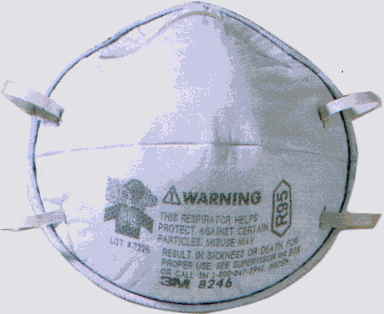Respiratory Protection
Respiratory Protection
When engineering controls or product replacement do not completely eliminate a breathing hazard or when required by regulation, campus personnel may be required to wear a respirator.
Respirators offer protection against inhalation of hazardous vapors or dusts. Respirators come in a variety of styles and types to fit a range of situations.
Prior to using a respirator, occupational health and safety regulations require employees to be fit-tested, have a physical or medical review and become aware of the limitations of the respirator.
|
This is a respirator, not a dust mask. As with any type of respirator, use of this respirator requires a annual fittest, annual physical assessment and program knowledge. | |||
|
|
This type of respirator is called a Full-Face Respirator. Full-face respirators are air-purifying respirators that have the potential to provide protection from many types of dusts, fogs, fumes, mists, gases, smokes, sprays, or vapors. In order to gain this protection, it is important that you have the proper filter or cartridge. Full-face respirators can take care of both lung and eye protection for asbestos work. | |||
 |
A PAPR is an air-purifying respirator that can be used to protect asbestos personnel who may be exposed to asbestos fibers during abatement activities. Powered air-purifying respirator (PAPR) is an air-purifying respirator that uses a blower to force the ambient air through air-purifying elements to the inlet covering. |
The Respiratory Protection Program was developed to assist campus employees understand the regulatory requirements associated with respiratory wear.
Portions of the OSHA regulations, needed by those that are involved in the Respiratory Protection Program are linked below:
- Appendix A: Mandatory Fittest Procedure
- Appendix B-1: User Seal Check Procedures
- Appendix B-2: Respirator Cleaning Procedures
- Appendix C: Respirator Medical Evaluation Questionnaire
- Appendix D: Non-Mandatory Respirator Wear
Other useful links:
